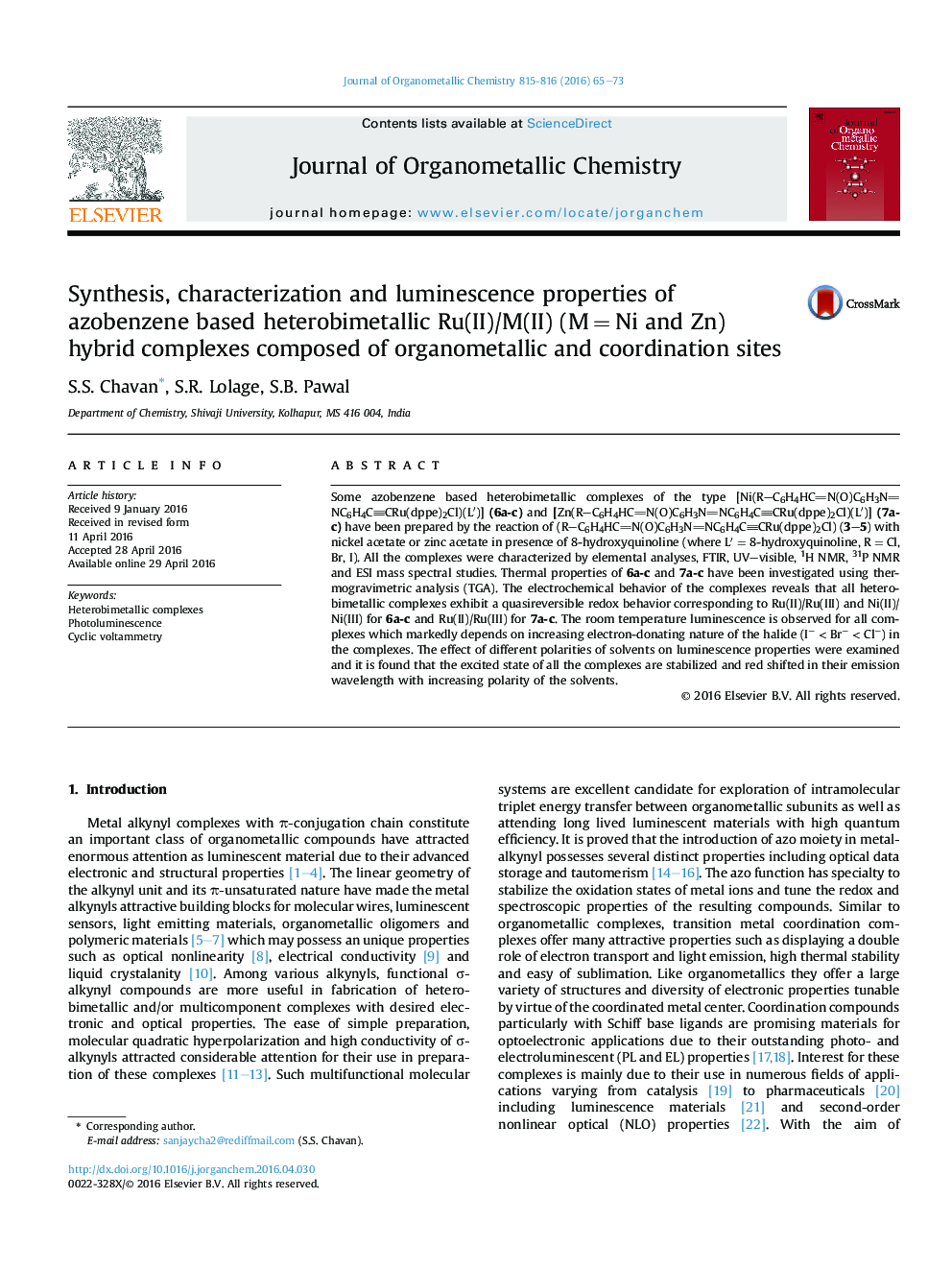| Article ID | Journal | Published Year | Pages | File Type |
|---|---|---|---|---|
| 1320501 | Journal of Organometallic Chemistry | 2016 | 9 Pages |
•Synthesis of heterobimetallic Ru(II)/M(II) (M = Ni and Zn) Hybrid complexes.•Characterization by elemental analyses, IR, 1H NMR, 31P NMR and mass spectral studies.•Quasireversible redox behaviour is accounted for all the complexes.•All complexes exhibit strong luminescence with high quantum yield.
Some azobenzene based heterobimetallic complexes of the type [Ni(RC6H4HCN(O)C6H3NNC6H4CCRu(dppe)2Cl)(L′)] (6a-c) and [Zn(RC6H4HCN(O)C6H3NNC6H4CCRu(dppe)2Cl)(L′)] (7a-c) have been prepared by the reaction of (RC6H4HCN(O)C6H3NNC6H4CCRu(dppe)2Cl) (3–5) with nickel acetate or zinc acetate in presence of 8-hydroxyquinoline (where L′ = 8-hydroxyquinoline, R = Cl, Br, I). All the complexes were characterized by elemental analyses, FTIR, UV–visible, 1H NMR, 31P NMR and ESI mass spectral studies. Thermal properties of 6a-c and 7a-c have been investigated using thermogravimetric analysis (TGA). The electrochemical behavior of the complexes reveals that all heterobimetallic complexes exhibit a quasireversible redox behavior corresponding to Ru(II)/Ru(III) and Ni(II)/Ni(III) for 6a-c and Ru(II)/Ru(III) for 7a-c. The room temperature luminescence is observed for all complexes which markedly depends on increasing electron-donating nature of the halide (I− < Br− < Cl−) in the complexes. The effect of different polarities of solvents on luminescence properties were examined and it is found that the excited state of all the complexes are stabilized and red shifted in their emission wavelength with increasing polarity of the solvents.
Graphical abstractFigure optionsDownload full-size imageDownload as PowerPoint slide
